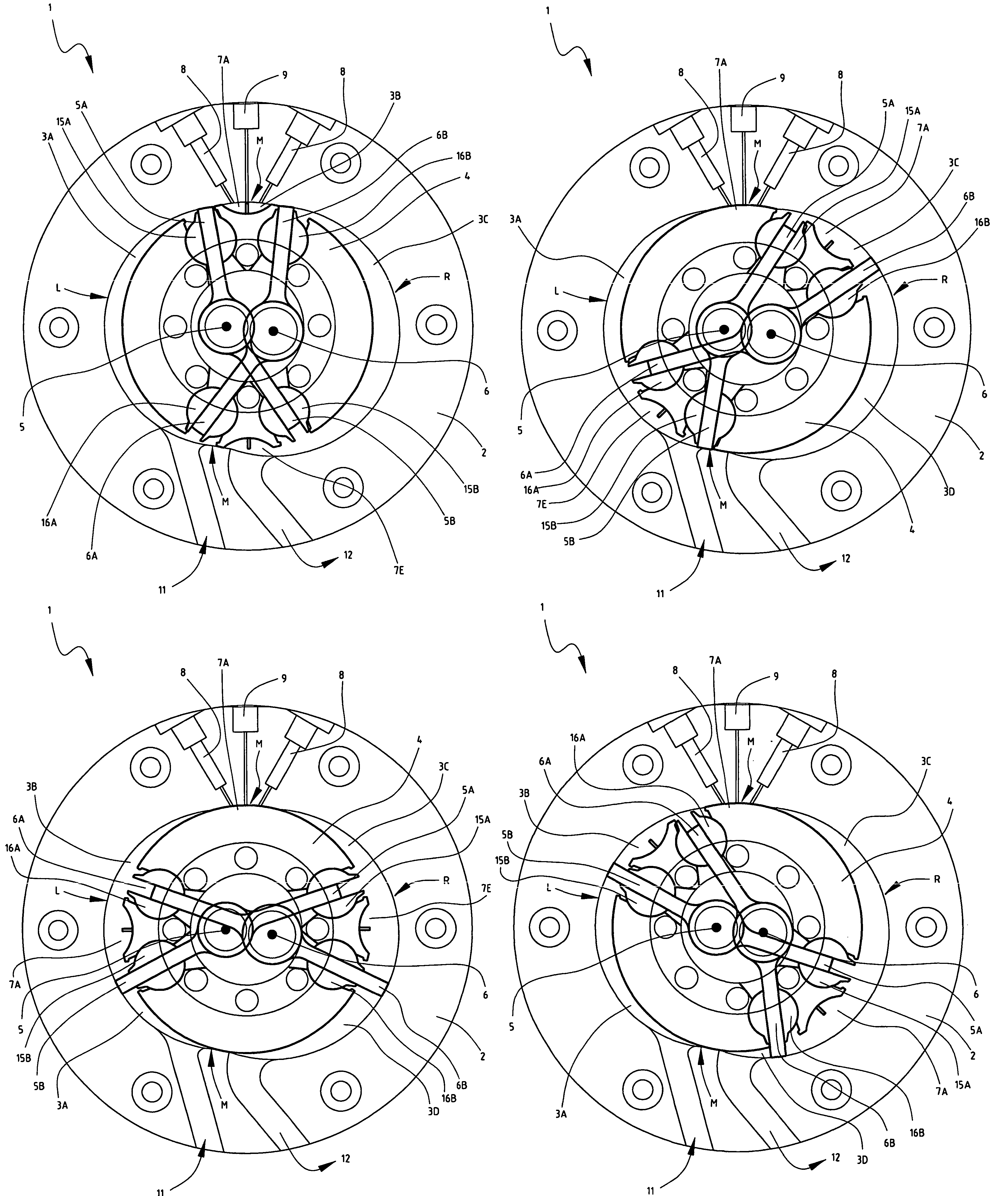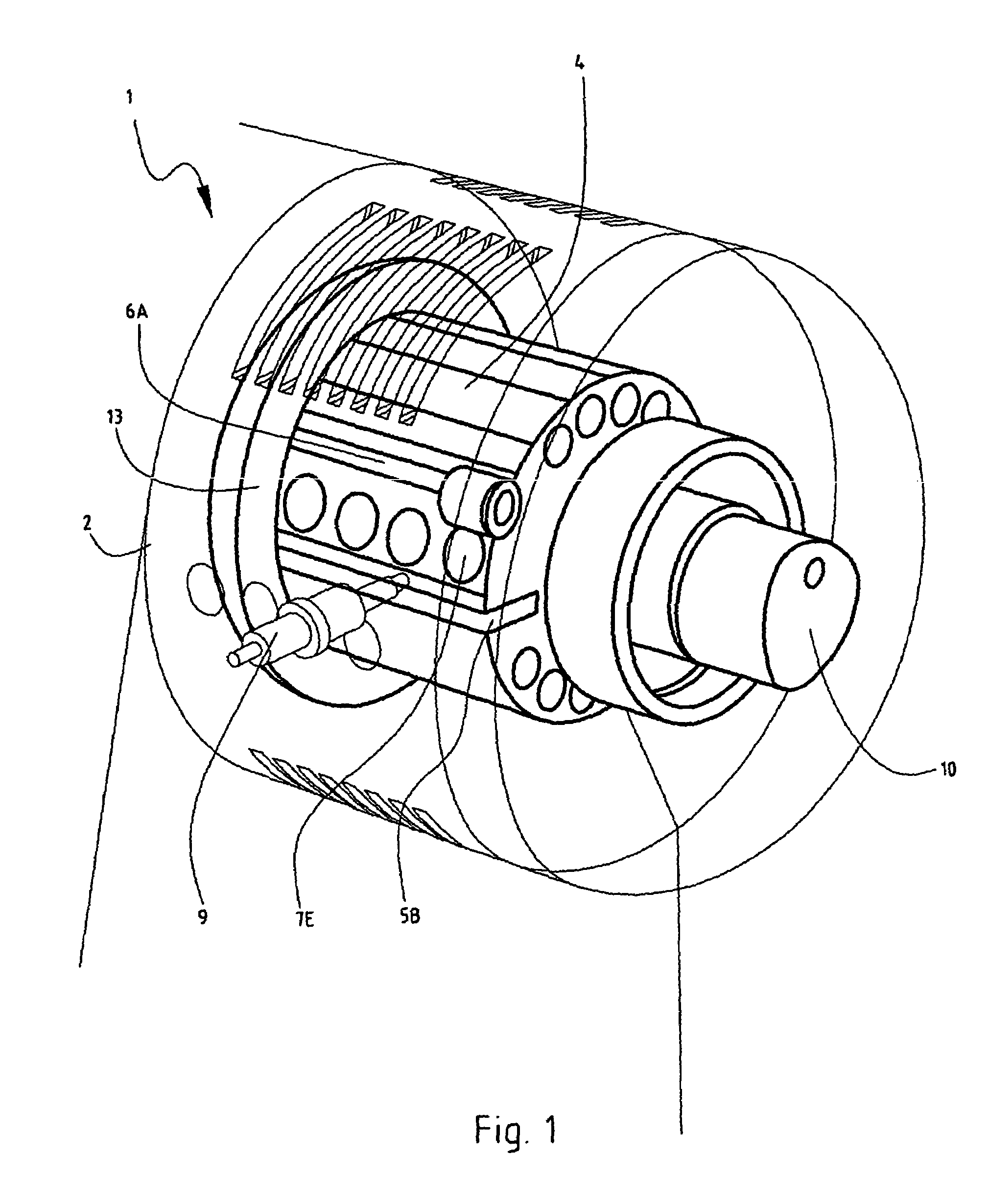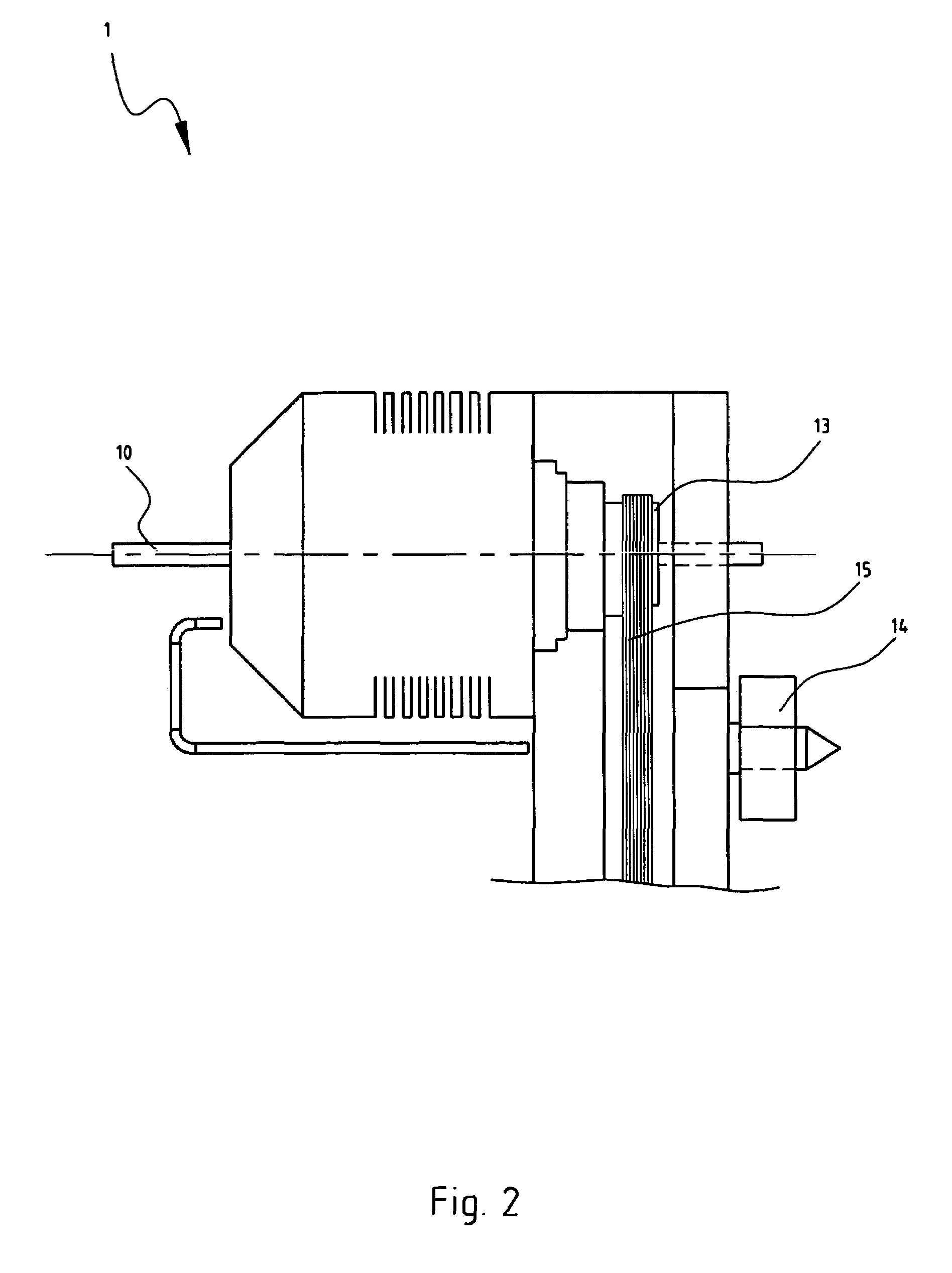Combustion engine
a combustion engine and combustion chamber technology, applied in the field of combustion engines, can solve problems such as limiting the maximum number of recesses in practice, and achieve the effects of low thermal and acoustic environmental impact and high efficiency
- Summary
- Abstract
- Description
- Claims
- Application Information
AI Technical Summary
Benefits of technology
Problems solved by technology
Method used
Image
Examples
Embodiment Construction
[0020]FIG. 1 shows a schematic view of a preferred embodiment of combustion engine 1 according to the invention. Combustion engine 1 has a housing 2, in which is situated a space or chamber 3. Arranged in chamber 3 is a rotor 4, on which are mounted vanes or blades 5A, 5B, 6A, 6B. The four vanes divide the chamber into a number of compartments. Housing 2, chamber 3 and rotor 4 have a general cylindrical shape.
[0021]Rotor 4 has a number of recesses 7A–H for receiving fuel. The recesses are arranged on either side of the rotor and can take different forms. The form is generally cup-shaped or groove-shaped. An example of a cup shape is a hemisphere or a bowl with an elliptic section resembling half an egg. An example of a groove-shaped form is a half-cylinder. Shown in FIG. 1 by way of illustration are hemispherical recesses 7A–D. The number of recesses 7 amounts to two or more per side and depends on the engine capacity. For illustrative purposes, it is expected that a number of betwe...
PUM
 Login to View More
Login to View More Abstract
Description
Claims
Application Information
 Login to View More
Login to View More - R&D
- Intellectual Property
- Life Sciences
- Materials
- Tech Scout
- Unparalleled Data Quality
- Higher Quality Content
- 60% Fewer Hallucinations
Browse by: Latest US Patents, China's latest patents, Technical Efficacy Thesaurus, Application Domain, Technology Topic, Popular Technical Reports.
© 2025 PatSnap. All rights reserved.Legal|Privacy policy|Modern Slavery Act Transparency Statement|Sitemap|About US| Contact US: help@patsnap.com



